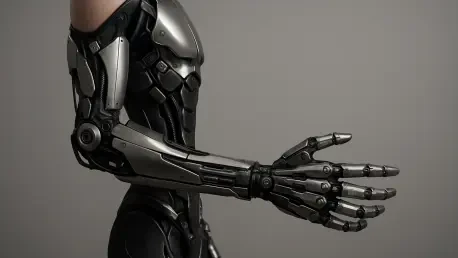What happens when a breakthrough in bionic limb technology, heralded as a game-changer for robotics and prosthetics, turns out to be built on questionable science? A recent critique has sent shockwaves through the scientific community, challenging the credibility of a study that promised to revolutionize lightweight designs for bionic robot limbs. This controversy isn’t just about one paper; it strikes at the heart of trust in academic research, where the stakes are as high as the hopes of patients and innovators. Dive into this unfolding drama, where data discrepancies and systemic failures collide, raising urgent questions about the future of cutting-edge technology.
Unraveling a Scientific Puzzle: Can Bionic Limb Research Be Trusted?
The allure of bionic limbs—merging human capability with robotic precision—has captivated researchers and the public alike. Yet, a shadow now looms over a prominent study from Henan University of Technology, published in a respected journal. This research, focused on lattice structures for lighter, stronger robot limbs, was initially seen as a leap forward. However, a detailed critique has exposed flaws so significant that they call into question the very foundation of the findings, sparking a debate that could reshape perceptions of scientific rigor in this field.
This isn’t merely an academic squabble tucked away in scholarly circles. The implications ripple outward, affecting engineers designing next-generation prosthetics and patients awaiting life-altering solutions. If the data behind such innovations can’t be trusted, the path to progress becomes mired in uncertainty. The critique serves as a stark reminder that even the most promising advancements must withstand the sharp scrutiny of evidence-based analysis.
The Critical Role of Bionic Limb Innovation in Today’s World
Advancements in bionic limb technology stand at the forefront of modern robotics, offering transformative potential across diverse sectors. From creating agile robots for aerospace missions to designing prosthetics that restore mobility, the demand for lightweight, durable materials has never been greater. Research in this area holds the promise of enhancing lives, with studies like the one under scrutiny aiming to set new benchmarks for efficiency and strength in design.
However, when doubts surface about the validity of such pivotal work, the fallout extends far beyond laboratory walls. Patients hoping for better prosthetics, industries banking on reliable robotics, and researchers building on published data all face the risk of setbacks. This situation highlights a pressing need for unwavering standards in scientific inquiry, as eroded trust could stall innovation at a time when it’s needed most.
Peeling Back the Layers: Flaws Exposed in the Research
A meticulous dissection of the study on lattice-based bionic limbs reveals a troubling array of errors that undermine its credibility. Data inconsistencies top the list, with misreported relative densities for lattice units and conflicting claims about performance under stress tests like bending and torsion. For instance, maximum displacement values for one unit are incorrectly stated, while stiffness metrics for another are mixed up, pointing to sloppy documentation at best.
Further scrutiny uncovers critical omissions that deepen the skepticism. Despite claims of superior performance for a specific lattice unit, identified as No. 14, it’s inexplicably absent from key analyses and visual data representations. This selective reporting suggests either oversight or intentional bias, casting doubt on the study’s objectivity. Such gaps aren’t trivial; they strike at the core of whether the research can be taken seriously.
Perhaps most damning are the exaggerated outcomes presented. The study boasts a weight reduction of 23% for optimized structures, yet the data indicates a more modest figure of around 19.44%. This discrepancy, alongside other unsupported assertions like a near doubling of stiffness, fuels concerns about inflated results. These issues collectively paint a picture of a study that may not hold up under rigorous examination.
Expert Skepticism: Voices Questioning Integrity and Oversight
Critics have not minced words in their assessment of this controversial paper, with some speculating it could be the product of a so-called “paper mill”—operations known for churning out low-quality or fabricated research. While this remains a hypothesis, the sheer number of errors and inconsistencies lends weight to suspicions of manipulated or retrofitted data. Such accusations, even if unproven, spotlight a darker underbelly of academic publishing that threatens to taint genuine scholarship.
Beyond the study itself, fingers are pointed at the peer-review process of the journal that published it, a title under the prestigious Nature portfolio. How did such glaring flaws escape detection by reviewers and editors? This lapse suggests systemic cracks in quality control, where the rush to publish might overshadow the need for thorough vetting. Experts argue this isn’t an isolated incident but a symptom of broader pressures within the scientific community.
The call for retraction resonates among academics and watchdog groups, who warn that flawed research can poison entire fields if left unchecked. Robotics, a discipline reliant on precise and trustworthy data, stands particularly vulnerable. This critique amplifies a growing chorus demanding accountability, urging journals to prioritize integrity over volume in their publication practices.
Systemic Challenges: The Bigger Picture of Scientific Publishing
The controversy surrounding this bionic limb study unveils deeper issues plaguing academic research today. The pressure to publish frequently, often tied to career advancement and funding, can incentivize quantity over quality, leading to rushed or substandard work. When combined with inadequate peer review, as appears to be the case here, the risk of disseminating unreliable findings skyrockets, eroding public and professional confidence.
Moreover, the rise of questionable publishing practices, including the suspected involvement of paper mills, adds another layer of complexity. These operations exploit the publish-or-perish culture, producing studies that may look credible on the surface but crumble under scrutiny. This trend, if unchecked, could flood reputable journals with dubious content, making it harder for genuine breakthroughs to stand out.
Addressing these challenges requires a collective effort from researchers, institutions, and publishers alike. Stricter guidelines, transparent review processes, and penalties for unethical practices must become the norm. Without such reforms, incidents like this one risk becoming commonplace, stalling progress in critical fields like bionic technology where reliability is non-negotiable.
Restoring Faith: Steps Toward Reliable Research
In the wake of this unsettling critique, actionable measures emerge as vital to rebuilding trust in scientific endeavors. Readers and professionals in robotics are encouraged to approach published studies with a critical eye, verifying data and methodologies rather than accepting claims at face value. Cross-checking primary sources can serve as a first line of defense against flawed research.
Journals, on the other hand, must commit to rigorous peer-review standards, potentially by making reviewer comments public alongside published works. Collaboration between trusted institutions to replicate key findings before their application in real-world projects offers another safeguard. Such steps ensure that innovations in bionic limbs rest on solid ground, protecting both progress and those who depend on it.
Looking back, the scientific community grappled with a pivotal moment when doubts surfaced about this bionic limb study. The exposed flaws and the ensuing debate underscored a critical need for vigilance. Moving forward, the focus shifted to enforcing accountability through public discourse and formal retractions when necessary. By embracing transparency and demanding higher standards from 2025 onward, stakeholders aimed to shield future innovations from the pitfalls of unreliable science, ensuring that the promise of bionic technology remained within reach.









